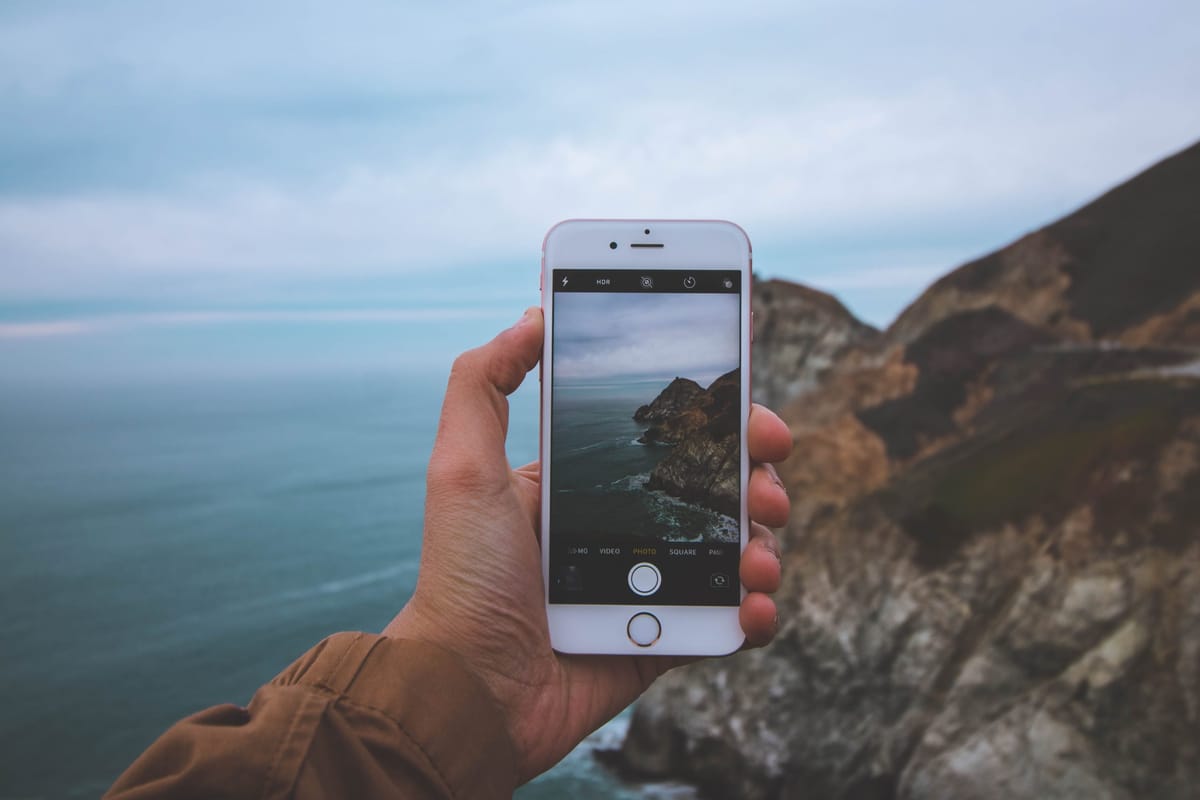10 mobile apps for landscape photographers (2019)
Favorite iOS and Android apps for creating landscape images

Whenever I travel on a landscape photography trip, I depend on mobile applications to schedule, plan, and track my travel in addition to improving my work as a landscape photographer. Which apps do I actively use while on the road? Here are 10 mobile apps for landscape photography which will come in handy next time you hit the road.
Gaia GPS (iOS / Android) — Before you hike or explore unfamiliar terrain, open Gaia GPS, and tap Record. Like digital breadcrumbs, Gaia GPS tracks your route as you move so you always know how far you’ve gone and (most importantly) how to get back. Especially helpful when hiking in the dark or when exploring an area that appears the same in every direction (eg, sand dunes). I also love the camera functionality, for it allows you to snap photos and then pin their GPS coordinates to your route so you can return later (when the light is good) and easily find their locations. Best of all, the app is free and works brilliantly without cellular access. Check out my GAIA GPS video review for more info.
Google Maps (iOS / Android) — This one is kind of a no-brainer, but I depend on Google Maps for…well, everything! It’s my bookmarking app of choice to collect locations and save them to custom lists. I use it pretty much every day.
Google Earth (iOS / Android) — Google Maps has solid terrain and satellite images, but when you want to get super close, you need Google Earth. I love using Google Earth to fine-tune my research of a particular location to get an up-close look at roads, peaks, elevations, and the angle of the sun as it passes over.
Avenza Maps (iOS / Android) — As great as Google Maps and Google Earth are, there’s a limit to their usefulness once you get deep into rural landscapes — especially where cell coverage is non-existent. In those instances, you need old-school Park maps which can be accessed and used offline. With Avenza Maps, just scroll to the area of the world you’re traveling to and tap pins to access highly detailed maps for that region. There’s also a filter to view only free maps. The perfect app for safely exploring the backcountry.
Windy (iOS / Android) — If there’s one thing I’ve learned from traveling to Iceland and Norway, wind is far more problematic than precipitation. Wind can wreck your drone, knock over your tripod, or blow your car off the road. Windy will not only tell you how strong the winds currently are but also forecast future wind patterns so you can plan accordingly.
PhotoPills (iOS / Android) — I have to admit, I haven’t used PhotoPills until very recently. I’ve known about the app for a long time, but most of its features I was already using with other apps, so I didn’t see the point in buying it. Well, I’m so glad I finally did, because PhotoPills does it all. Calculators for exposure, depth of field and hyperfocal distance, sun/moon tracking, milky way planning, etc. And if you need help, PhotoPills has fantastic articles and videos. Well worth the cost of admission.
PeakFinder AR (iOS / Android) — That mountain you’re photographing? It has a name! PeakFinder AR makes it easy to view the names of every mountain and peak around you with a 360-degree panorama display. It also functions entirely offline so you can use it where cell service doesn’t reach. Using PeakFinder AR, you can now write descriptive photo captions with actual names instead of just “a mountain in the Dolomites”!
LEE Filters Stopper Exposure (iOS / Android) — The aforementioned PhotoPills app has an exposure calculator for ND filters, but I much prefer the simplicity and ease of use of this free app from LEE filters. The app functions like an old-school slide ruler with huge, easy to read dials (which makes it super clear and fast in the field). Simply dial in the shutter speed your camera is currently set to, and the app calculates appropriate shutter speeds for 6, 10, and 15 stop ND filters. Designed for use with LEE’s own Little, Big and Super ND filters, but you can use this app with comparable filters from any manufacturer.
AllTrails (iOS / Android) — Need to know how hard a hiking trail will be? Or which trails in a park are most popular? AllTrails provides detailed information on hiking trails and maps all over the world, in addition to reviews and photos from your fellow hikers. I use this as part of my research to figure out how long a hike will take and where I need to go.
Hipcamp (iOS / Android) — Think of it as the Airbnb for camping. Book unique locations to pitch a tent, park an RV, or do a bit of glamping. Most properties are privately owned farms, ranches, and homes, where you’ll have the place all to yourself instead of staying in a noisy, crowded campground.
Outdoorsy (iOS only or Web) — If you want to stay close to where you’re shooting to catch first light in the morning, an RV or campervan is the way to go. I don’t own one, so I’ve used Outdoorsy twice to rent privately owned campervans, and the experience has been fantastic.
FreeRoam (iOS / Android) — If Hipcamp isn’t your thing and you’d rather stay in a formal campground (especially ones which are free), FreeRoam helps you find a spot. The app does way more than simply plot campgrounds on a map. It also shows your cellular strength for different carriers, coverage maps, ratings for noise levels, popularity, and more. You can also quickly find the closest grocery store or dump station.



